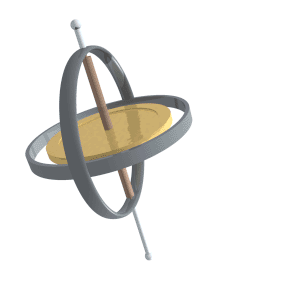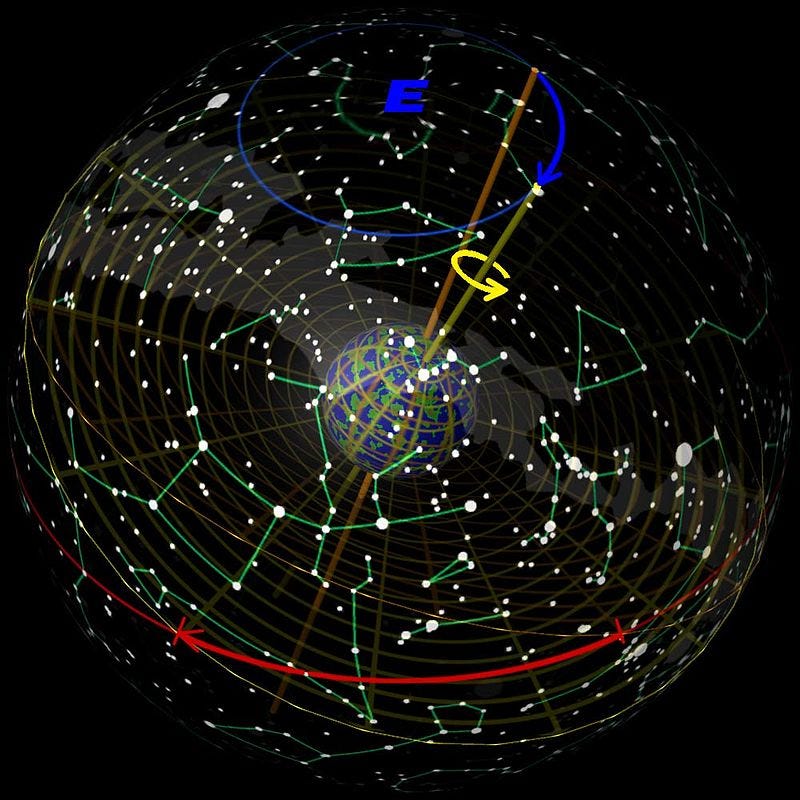# The Evolving North Star: A Journey Through Time and Space
Written on
Chapter 1: The Significance of the North Star
The North Star holds a critical role in both navigation and metaphor. Its consistent position in the night sky has made it a reliable guide for centuries, symbolizing an unwavering ideal in life. Chiara Viscomi from Healthpsych.com articulates this beautifully:
“Just as the literal North Star guides us, our inner North Star serves as our compass, revealing our passions and life’s purpose.”
The ancient Egyptians also revered their version of the North Star, yet their understanding diverged from our contemporary view. At various points in their history, they relied on different stars, including Thuban, as their guiding light. In contrast, we recognize Polaris as our current North Star. Interestingly, in about 12,000 years, Vega will take its place as the guiding star for future generations.
This narrative of a single star illuminates the complexities of ancient civilizations, our present understanding, and the future. It reminds us that even as we embrace scientific reasoning, the celestial bodies continue to influence our existence. However, it is crucial to understand that the Earth’s rotation alters our perception of the cosmos.
Section 1.1: Understanding the Precession of the Equinoxes
So, how does this cosmic transformation occur? To grasp this, consider the Earth’s behavior. While it rotates, creating day and night, it also tilts on its axis. Imagine a spinning top: if you place an arrow at the top, it traces a circular path across the sky.

According to the astronomy department at the University of Nebraska-Lincoln, our planet’s axial tilt is approximately 23.5 degrees. This tilt results from Earth’s shape, which is not a perfect sphere but slightly bulging around the equator. The gravitational influence of the Sun and Moon causes this tilt to wobble, tracing a conical shape over roughly 26,000 years.
The phenomenon of precession was first noted by the Greek astronomer Hipparchus in 129 BC when he observed shifts in star positions compared to earlier Babylonian records. The accompanying image illustrates the position of Thuban approximately 5,000 years ago and Polaris today, highlighting that future humans will experience yet another guiding star.

Section 1.2: Ancient Egyptians as Sky Observers
For the Egyptians, meticulous sky observation was essential for predicting the Nile’s annual floods and ensuring successful agriculture. Additionally, the true North was crucial for aiding pharaohs in their journey to the afterlife. The stars were integral to this process.
Tim Radford, in an article for the Guardian, references Egyptologists Toby Wilkinson and Kate Spence, who explain that pyramids functioned as ascension points for the spirits of the deceased. These monumental structures were oriented towards the North Star, and the Egyptians even named some pyramids after celestial bodies.
Spence has uncovered a potential riddle within the pyramids' foundations that may relate to the precession of the equinoxes. While all pyramids align with the North, the degree of accuracy varies, with the Great Pyramid of Giza being the most precise.
In a BBC News interview, Spence proposes that the Egyptians employed specific stars to align the pyramids, known as the “Indestructibles.” Notably, two stars remained visible, circling Polar North. According to Spence, these stars were symbolically linked to eternity and the pharaoh’s afterlife aspirations:
“After death, the king would hope to join the circumpolar stars — hence the pyramids’ orientation towards them.”
She explains that by using a stick to align with these stars (Kochab and Mizar), they could determine true North. This alignment was most accurate around 2,467 BC, suggesting the Great Pyramid was constructed shortly after, around 2,480 BC. Over time, as stars shifted, subsequent pyramids became less accurately aligned.
Chapter 2: Modern Echoes of Ancient Astronomy
The first video, "Ancient Egyptian Astronomy and the Milky Way," explores the significance of stars in ancient Egypt, highlighting their celestial navigation and agricultural practices.
Strangely, this celestial construction method is not entirely obsolete today. A modern example can be found at the Hoover Dam, which features a layout charting the nearly 26,000-year precession of the equinoxes. This chart marks the date of the dam’s completion alongside the star positions on that day.
In an article for the Long Now Foundation, Alexander Rose describes this intricate marker situated in a plaza at the dam. It features two large bronze figures beside a flagpole, with the procession chart laid out on the ground. When viewed from above, the flagpole serves as a celestial reference point, aligning with the date of construction and Polaris.
Rose also notes that the chart indicates Thuban as the Polar Star 5,000 years ago and predicts Vega’s future prominence in 12,000 years.
The second video, "Ancient Egyptian Constellations," delves into the constellations recognized by the Egyptians and their influence on culture and architecture.
A Different Time and a Different Sky
This exploration reveals a fascinating truth: the Ancient Egyptians inhabited a world vastly different from ours, gazing at a distinct sky. This scenario will repeat in the distant future, as our successors will also observe a different North Star.
Furthermore, Arvind Bhagwath, in his research paper “Sacred Alignment of Religious Structures to North Star,” notes that 10,000 years ago, the Sahara Desert was lush with vegetation due to shifts in the Earth’s axis. This area is predicted to become green again in 12,000 years.
While humanity often looks to the stars for guidance, it appears the Earth’s movements wield significant influence. History encompasses not only people and cultures but also the dynamic nature of our planet. A sudden alteration in the Earth’s axial tilt can redefine our North Star, transforming vibrant landscapes into barren deserts, and potentially disrupting the very foundations of our pyramids.
